Nestled in the vibrant heart of Hanoi’s Old Quarter, Hang Bo Street has a profound historical significance that resonates throughout the cultural and commercial landscape of the city. Known for its rich traditions in craftsmanship, especially bamboo products, this street epitomizes the intricate tapestry of Vietnamese culture intertwined with the echoes of its colonial past. With a total length of 272 meters, Hang Bo connects various key intersections in the Hoan Kiem district, leading visitors through a labyrinth of shops, food stalls, and historic sites that paint a vivid picture of Hanoi’s urban life.
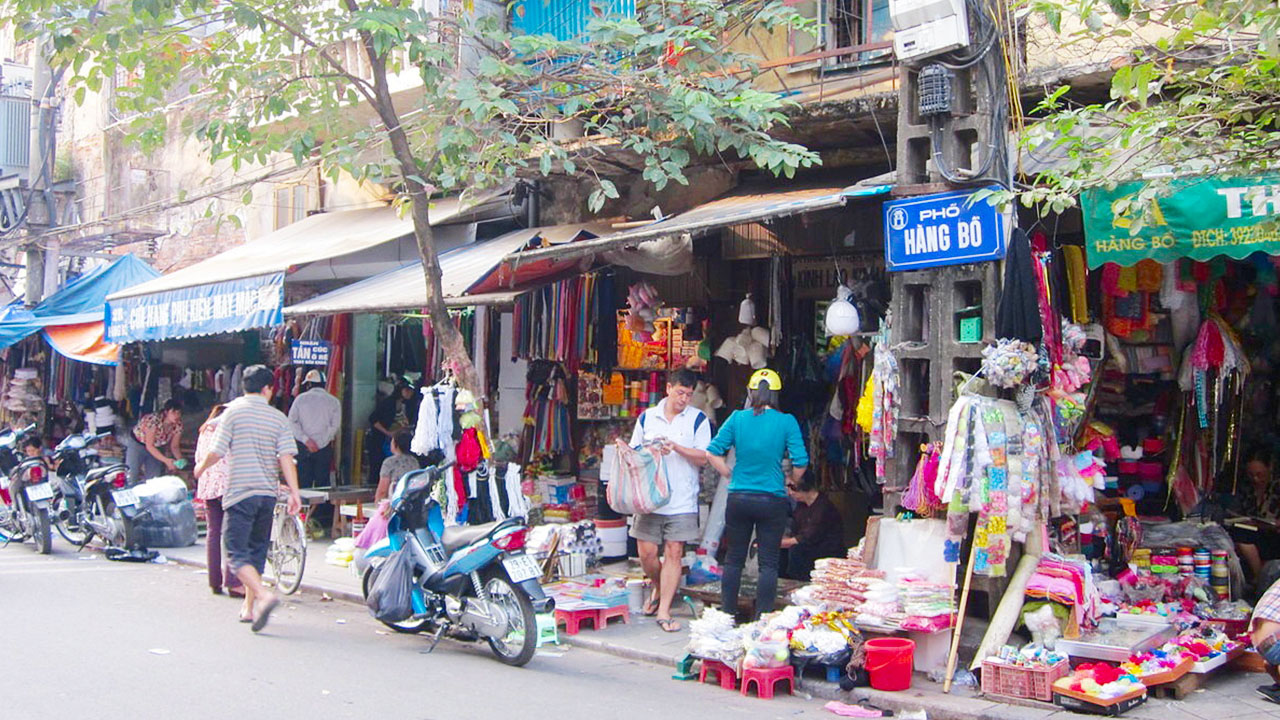
Historically known as “Rue Des Paniers” during the French colonial era, the street reflects the transition of Vietnamese society through the lens of commerce, culture, and art. The name itself, derived from “Hang,” meaning marketplace, and “Bo,” referring to baskets, is a tribute to its early beginnings as a bustling hub of bamboo craftsmanship. This specialization in bamboo products gave Hang Bo its unique identity, making it not just a street, but a cultural landmark that celebrates the vibrancy of Hanoi’s artisanal heritage.
As we traverse through Hang Bo, we are presented with a fusion of old and new; the bustling streets are filled with locals and tourists alike, each seeking a slice of this enchanting neighborhood. The narrow facades, colonial shophouses, and traditional architecture reveal stories of yesteryears, while contemporary shops and markets showcase the evolution of this vibrant area. From its historical roots as a craft center to a contemporary commercial hub, Hang Bo Street offers a unique narrative that invites exploration and appreciation, making it a must-visit destination for anyone looking to immerse themselves in the richness of Vietnamese culture.
https://drcarlosarzabe.com/dr-carlos-arzabe/ Historical Significance of Hang Bo Street
The historical significance of https://oleoalmanzora.com/oleoturismo-en-pulpi/Best Place Order Tramadol Online Hang Bo Street goes far beyond its physical presence in Hanoi. It stands as a testament to Vietnam’s rich cultural heritage and the evolution of its urban landscapes. Historically, Hang Bo was not only a commercial hot spot but also a cultural hub where tradition and modernity coalesce. Much like a time capsule, the street preserves the essence of Hanoi’s heritage while adapting to contemporary needs.
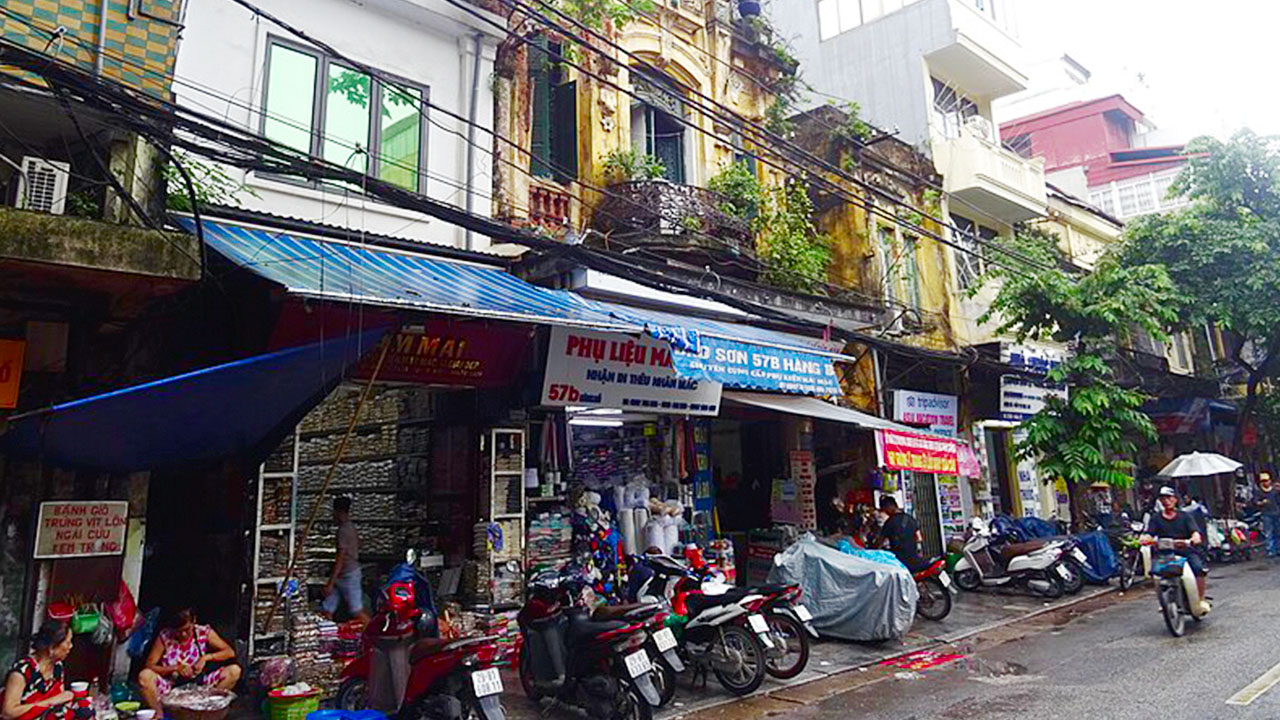
During the bustling Tet holiday, the street would come alive, attracting calligraphers and artists who gathered to exhibit their work, creating a festive atmosphere reminiscent of a vibrant art fair. This legacy of artistic expression continues to echo in the current cultural practices of the area, where festivals and communal gatherings are integral to the community identity.
The transformation of Hang Bo Street reflects the resilience of local traditions amidst colonial influences and modern commercial pressures. It mirrors the broader narrative of Hanoi’s Old Quarter, where artisanal crafts and vibrant markets continue to thrive despite globalization. The various shops that line the street today offer a juxtaposition of historical crafts and contemporary goods, showcasing a blend of past and present.
Overall, the significance of Hang Bo Street lies within its ability to maintain its cultural integrity while embracing new commercial opportunities, all of which contribute richly to the historical fabric of Hanoi. This street is not just about the products sold; it is a living narrative of the people, their traditions, and their interactions with both history and modernity.
Early Origins and Development
The early origins of Hang Bo Street provide a fascinating glimpse into the historical fabric of Hanoi. Initially, it served as a marketplace where bamboo craftsmen produced and sold a variety of bamboo products, particularly baskets. This unique specialization gave rise to the street’s name, reflecting its identity as a center of bamboo craftsmanship. The bustling ambiance of early market days filled the air with vibrant conversations, hawking voices, and the intricate sounds of artisans at work, much like a lively symphony that enveloped the senses.
As the street developed, it became more than just a marketplace. It evolved into a cultural epicenter, especially during significant events like Tet, when the craftsmanship of the local bamboo artisans drew visitors from all over. Vendors would line the streets, transforming it into a vibrant tapestry of colors, sights, and sounds, where traditional calligraphy and folk art thrived alongside contemporary creations.
The architectural identity of Hang Bo Street also plays a crucial role in its development. The narrow facades of the shophouses, built to maximize limited space, speak to the ingenuity of Vietnamese builders. Many of the structures showcase traditional decorative elements, blending functional design with aesthetic appeal. This architectural style has remained largely intact, serving as a physical reminder of the street’s storied past, even as modernity encroaches from all sides.
Despite the changing dynamics of urban life, Hang Bo Street has managed to preserve its historical essence. The demand for bamboo products may have waned, but the street has adapted by incorporating new crafts and practices. This resilience highlights how Hang Bo has remained relevant within the ever-evolving landscape of Hanoi. Today, it seamlessly blends traditional artistry with contemporary commercial offerings, inviting both locals and tourists to witness the enduring spirit of Vietnamese craftsmanship while celebrating the street’s rich history.
Key Historical Events
Throughout its storied past, Hang Bo Street has witnessed numerous significant historical events that have shaped not only the street itself but the broader context of Hanoi and Vietnam. Much like a live narrative where every chapter tells a story, Hang Bo’s historical timeline reflects the changing socio-political landscapes of the region. From the early days of colonial influences to the struggles for independence, the street has served as both a participant and observer of these transformations.
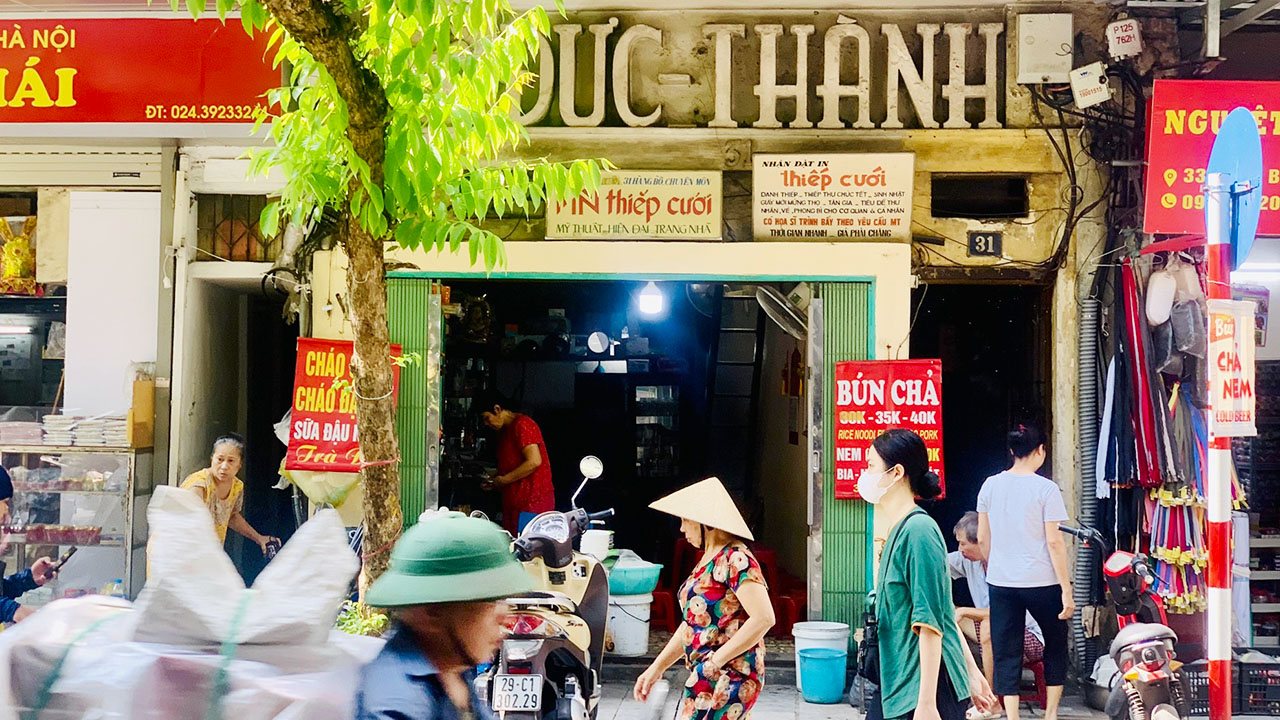
During the colonial period, Hang Bo Street was a focal point for artisans who specialized in bamboo and incense production. The competition for resources and trades has always been fierce, creating a lively environment filled with commerce and exchanges. This era marked an important transition where traditional Vietnamese crafts began to intertwine with foreign influences, creating a distinct blend that characterizes much of Hanoi’s architecture and street culture to this day.
The aftermath of World War II brought significant upheaval to Hang Bo as it reflected the broader societal changes. The street became a venue not just for commerce but also for cultural expression, particularly during Tet when it transformed into a platform for showcasing traditional arts such as calligraphy and folk paintings. This festive atmosphere served as a reminder of the resilience of the Vietnamese spirit, highlighting the importance of collective memory and cultural identity in rebuilding and redefining the community.
In more recent years, Hang Bo Street has weathered the storms of urbanization and globalization, adapted by incorporating new trades, shops, and culinary experiences. It serves as a reminder of the delicate balance between preserving cultural heritage and embracing modernization. The blend of old and new encapsulates the journey of not just the street, but of a nation that continues to evolve while holding onto its rich past.
Today, as visitors stroll along Hang Bo, they encounter reminders of its historical significance through artisanal crafts, culinary delights, and social interactions that continue to honor the street’s legacy. Hang Bo Street remains a vibrant symbol of Hanoi’s dynamic historical narrative, inviting deeper explorations into the life and spirit of the Old Quarter.
Architectural Features of Hang Bo Street
The architectural features of Hang Bo Street reveal a distinctive blend of traditional Vietnamese design and colonial influences that make it a unique aspect of Hanoi’s Old Quarter. As we traverse this historic street, we encounter narrow, bustling lanes lined with charming structures that embody both functionality and artistic flair. These architectural elements create an intimate environment that encapsulates the essence of Vietnamese urban life, making Hang Bo an architectural treasure trove waiting to be explored.
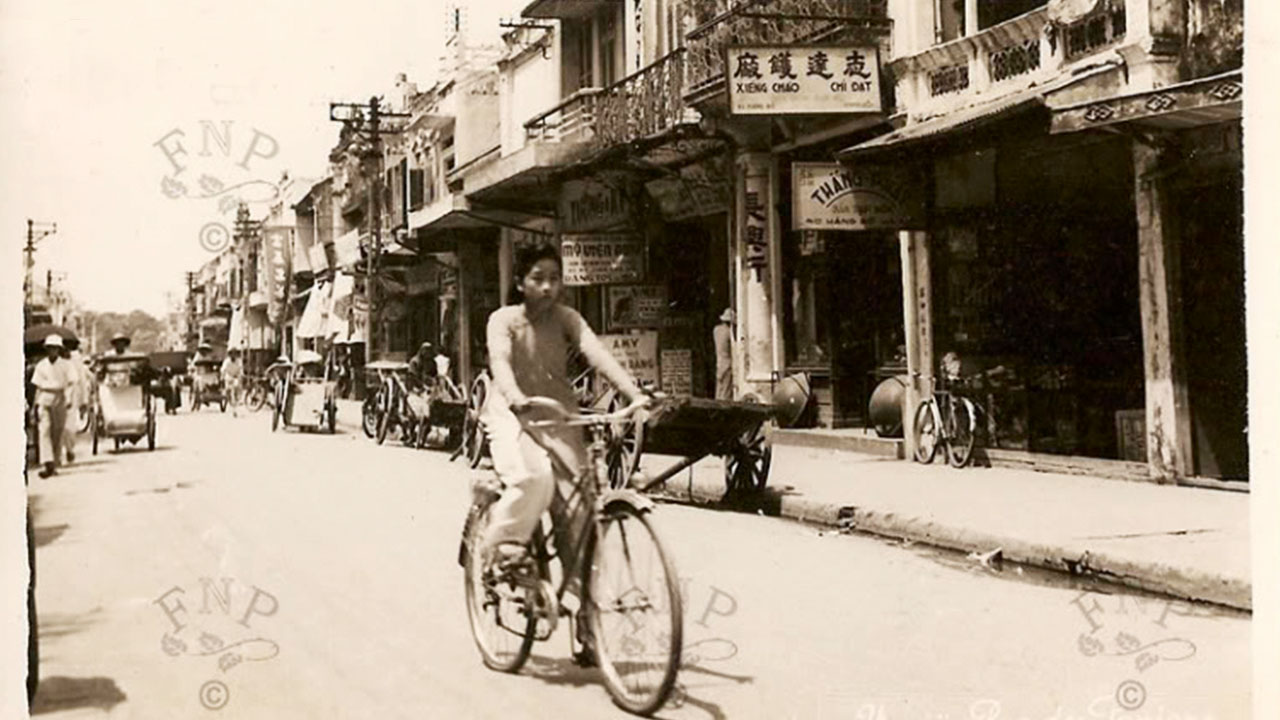
One of the street’s most notable architectural characteristics is its narrow facades, which reflect the practical need for maximizing space in the densely populated area. Residents and shop owners have adeptly utilized this limited space to create inviting storefronts that entice visitors and locals alike. Many buildings are typically two stories high, with simple yet elegant decorations adorning their exteriors, demonstrating a unified aesthetic that is both charming and functional.
A signature element of Hang Bo Street’s architecture is the presence of decorative balconies and louvers. These small balconies, often adorned with potted plants, add a touch of greenery and visual interest to the narrow streets. Louvers, on the other hand, serve an essential purpose in the tropical climate of Hanoi, allowing for better airflow while offering a degree of privacy. Together, these elements contribute to the overall character of the street, providing a glimpse into the way locals interact with their environment.
The architectural styles on Hang Bo Street encapsulate the rich history of Hanoi. Traditional Vietnamese elements are prevalent, with ornamental wooden carvings, vibrant colors, and terracotta tiles that showcase local craftsmanship. Additionally, remnants of French colonial architecture are visible, where wider balconies and wrought-iron railings reflect the era of European influence and design. The blend of these architectural styles tells a story of a place that has embraced diversity while remaining true to its roots.
The presence of cultural landmarks, such as temples and shrines interspersed among the shops, adds another layer of significance to Hang Bo’s architectural narrative. These buildings not only serve spiritual purposes but also visually enhance the urban fabric, providing a sense of continuity between the commercial and the sacred.
In summary, Hang Bo Street is a living canvas of architectural expression that resonates with the history and culture of Hanoi. Its structures, with their unique combinations of traditional and colonial elements, invite exploration and appreciation, making the street an essential part of any journey through the Old Quarter.
Notable Buildings and Structures
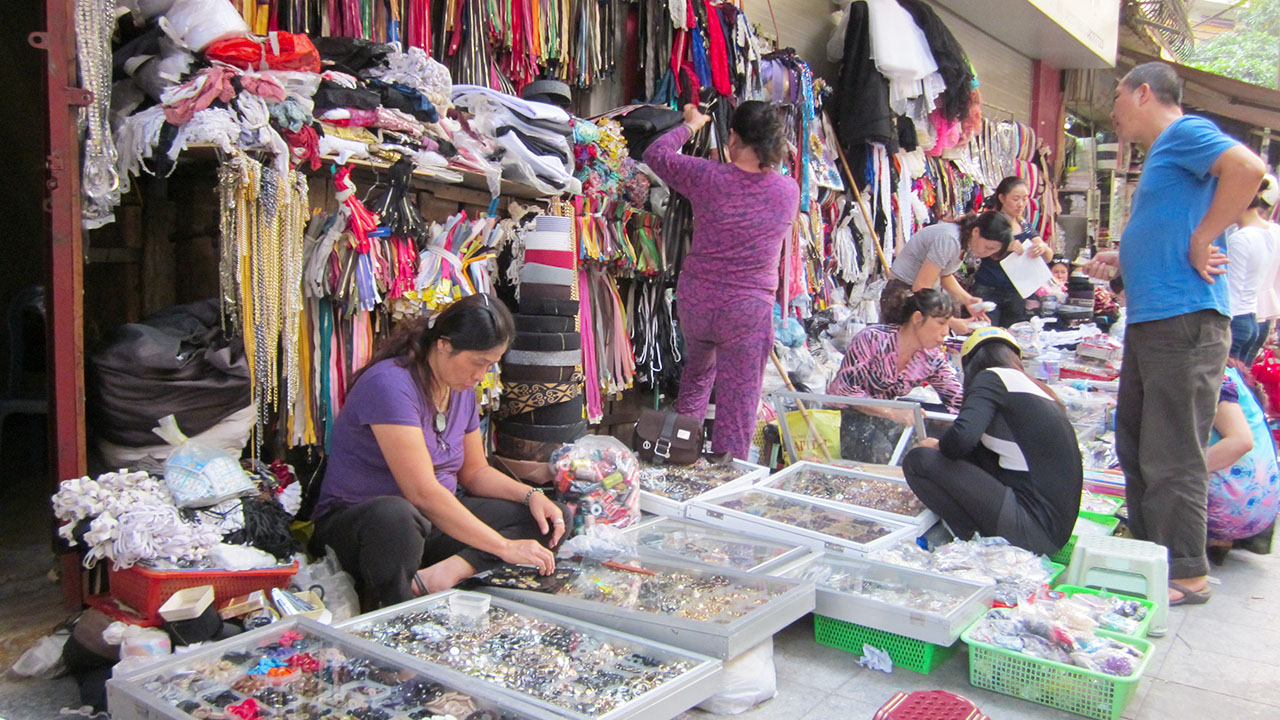
Within Hang Bo Street, notable buildings and structures stand as testaments to the street’s rich history and architectural diversity. Each of these landmarks carries its own story, contributing to the vibrant atmosphere that defines this bustling part of Hanoi, blending commercial vitality with cultural significance.
- Hang Bo Market: As a significant landmark, the market embodies the traditional marketplace layout found throughout Vietnam. The market serves as a focal point for both locals and tourists, offering a diverse array of products, from fresh produce to handicrafts. Its bustling ambiance encapsulates the essence of local Japanese market life and provides insight into the daily lives of the Hanoians.
- Historical Shophouses: Lined along Hang Bo, the traditional shophouses showcase the distinctive narrow facades typical of Hanoi’s Old Quarter. These structures often feature deep interiors and tiled roofs, presenting an architectural style that harks back to bygone days. The intricate decorative elements on wooden pillars elevate the character of these shophouses, acting as a reminder of the craftsmanship and artistry inherent in traditional Vietnamese architecture.
- The Kim Ngan Temple: This temple dedicated to Hien Vien, the founder of the silver craft, serves as a crucial landmark for the community. Not only is it a space for worship, but it also hosts cultural ceremonies and gatherings, highlighting its role in preserving traditional practices within the neighborhood’s fabric. The temple’s ornate features and tranquil atmosphere offer a moment of reflection amidst the hustle and bustle of the street.
- Colonial Influence Structures: As you stroll through Hang Bo, glimpses of colonial architecture emerge, characterized by wider balconies, decorative moldings, and wrought iron accents. These structures offer a historical context that complements the indigenous designs, showcasing the unique blend of influences that have shaped this vibrant area.
Overall, the range of notable buildings and structures along Hang Bo Street encompasses the essence of Hanoi’s identity. Each landmark contributes to a rich narrative built on commerce, crafts, religion, and resilience. Exploring these sites allows visitors to gain a deeper appreciation for the city’s historical layers and the vibrant culture that continues to thrive on Hang Bo Street.
Architectural Styles Represented
Hang Bo Street is an architectural gem that presents a harmonious blend of various styles, embodying the historical and cultural complexity of Hanoi. As you wander through this lively street, you are treated to an eclectic mix of architectural influences that narrate the story of Vietnam’s evolution over time. These different styles not only enhance the visual appeal of the area but also inform visitors about the rich craftsmanship and history that date back centuries.
- Traditional Vietnamese Style: The predominant architectural style throughout Hang Bo consists of traditional Vietnamese design elements. Characterized by its narrow and elongated layout, the buildings often feature ornate wooden carvings and decorative roof tiles. Bright colors and intricate detailing highlight the creativity of artisans, weaving a cultural tapestry representative of local craftsmanship. This style encapsulates the spirit of community, as families have occupied these spaces for generations.
- French Colonial Influence: The architectural landscape of Hang Bo is also enriched by the presence of French colonial design. Buildings that reflect this style typically feature wider balconies adorned with wrought-iron railings and stucco facades. These influences emerged during the French occupation of Vietnam, where local architecture began to blend with European design elements, creating a truly unique hybrid style. The coexistence of French colonial architecture with traditional Vietnamese designs in Hang Bo speaks to a historical dialogue between cultures and their respective aesthetics.
- Religious and Cultural Landmarks: Amidst the market stalls and shops, small temples and shrines pepper Hang Bo. These sacred spaces contribute to the cultural richness of the street, representing moral guidance and spiritual connection for the local community. The architectural features of these religious sites often exhibit intricate carvings, vibrant colors, and traditional motifs, visually contrasting with the commercial buildings they inhabit.
- Adaptive Reuse and Modernization: As Hanoi evolves, newer structures have begun to emerge along Hang Bo, reflecting a modern interpretation of both traditional and colonial designs. These contemporary buildings often feature glass facades and innovative designs that cater to modern consumer needs. This adaptation is indicative of a city that respects its past while embracing the future, offering a dynamic face to visitors wishing to explore its heritage.
In summary, the architectural styles represented along Hang Bo Street create a visually captivating narrative that engages its visitors. From traditional Vietnamese designs to French colonial influence, each structure contributes to the unique identity of the area, offering insights into the cultural, historical, and social evolution of Hanoi as it continues to thrive today.
Cultural Aspects of Hang Bo Street
The cultural aspects of Hang Bo Street reflect a vibrant blend of tradition, community, and contemporary life in Hanoi’s Old Quarter. A bustling hub, the street showcases the intricate tapestry of Vietnamese culture that shapes the identity of its residents, combining artistic expression, local traditions, and daily interactions in a way that highlights the cultural fabric of the area.

Historically, Hang Bo was known for its artisanal bamboo crafts, and although modern commerce has diversified, the legacy of traditional practices persists. Ceremonial attributes surrounding the Tet holiday demonstrate how cultural identity is maintained through festivities and communal gatherings. Numerous vendors market colorful bamboo decorations and handcrafted items that tie back to the street’s original specialization, preserving its historic significance while providing a feast for the senses.
The communal atmosphere permeating Hang Bo is palpable. With vendors setting up stalls and residents utilizing the pavements for social interactions, the street functions as a dynamic space where bonds are formed and traditions are shared. Local residents gather to engage in activities such as dining and playing traditional games, underscoring the importance of interpersonal relationships within Vietnamese culture. Children doing homework outside their homes further exemplify the family-centric values that characterize the street.
Culinary traditions and street food play an essential role in the cultural life of Hang Bo Street. Food stalls serving popular dishes like bánh mì and phở not only satisfy hunger but also foster social interactions, stemming from the common practice of sharing meals and stories. Street food is a testament to the communal spirit that thrives in Hang Bo, with locals flocking to these stalls day and night, each meal representing a moment of cultural connection.
Additionally, the presence of the Kim Ngan Temple within proximity adds religious significance, serving as a place of worship and a venue for traditional ceremonies. The temple honors the craftsmanship of the area, acting as an anchor for local cultural identity amidst modernity’s embrace.
In summary, the cultural aspects of Hang Bo Street encompass a rich blend of tradition, community, and culinary heritage. The street not only serves as a commercial hub but also as a living, breathing representation of Hanoi’s vibrant culture, illustrating how local traditions remain vital to the ever-changing urban landscape.
Local Traditions and Practices
The local traditions and practices found along Hang Bo Street encapsulate the essence of Vietnamese culture, celebrating a vibrant community that thrives on shared rituals and customs. These time-honored practices are woven into the daily life of the street, creating a living tapestry of interaction, creativity, and heritage.
At the heart of Hang Bo’s local traditions is the historic celebration of Tet, the Vietnamese Lunar New Year. During this festival, the street transforms into a vibrant marketplace filled with colorful decorations and bamboo products that echo its crafting roots. Vendors set up stalls featuring traditional sweets, flower arrangements, and intricate lanterns, each item representing symbolic meanings that reflect themes of prosperity, renewal, and unity. This festive environment draws families and communities together, highlighting the importance of collective celebration that resonates deeply within Vietnamese society.
Another local practice that is interwoven with life on Hang Bo is the communal sharing of meals. Street food stalls serve as social hubs, where families and friends gather to enjoy popular dishes like bun cha, pho, and freshly baked banh mi. Sharing food with loved ones strengthens bonds and fosters connections, making the act of dining an essential part of the cultural fabric of the street. This practice of communal eating creates an atmosphere of warmth and togetherness, where stories are exchanged and new friendships are forged.
In addition to seasonal celebrations and shared meals, traditional games and activities are commonplace on Hang Bo, especially among the younger generations. Kids can be seen playing games like mèo đuổi chuột (cat chasing mouse), creating vibrant sounds of laughter that fill the air. The presence of families engaging in recreational pursuits, such as traditional ********** or kite-flying, further underscores the importance of leisure in the local rhythm of life. This aspect of everyday existence not only promotes cultural heritage but also encourages a sense of belonging within the community.
Moreover, craftsmanship in bamboo goods is an integral part of Hang Bo’s identity. Local artisans continue to practice these traditional skills, producing functional and decorative items that can be found in many shops along the street. The process of handcrafting involves generations of knowledge passed down, preserving this essential aspect of Vietnamese cultural heritage.
Through these diverse local traditions and practices, Hang Bo Street remains a vibrant embodiment of Hanoi’s cultural identity, nurturing connections and celebrating the rich heritage that binds its community together. It stands as a living reminder of the importance of tradition amidst the rapid changes of modern life.
Festivals Celebrated on Hang Bo Street
Festivals celebrated on Hang Bo Street create lively moments of cultural expression, reflecting the rich tapestry of traditions embraced by the local community. While specific festivals are often tied to broader celebrations in Vietnam, the essence of these events permeates through Hang Bo, transforming the street into a vibrant cultural showcase, especially during significant occasions like Tet (Lunar New Year) and the Mid-Autumn Festival.
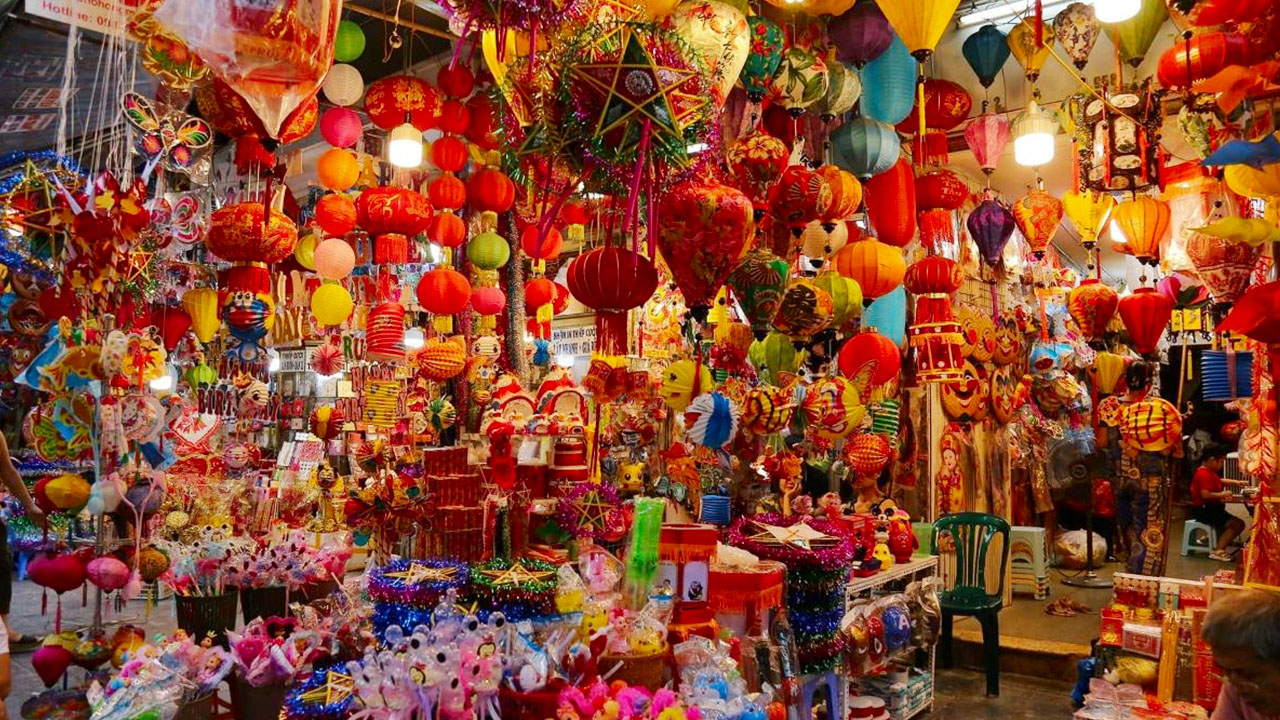
During Tet, Hang Bo becomes an exhilarating hub of activity, adorned with bright decorations and the enchanting aroma of street food filling the air. Vendors participate energetically, presenting colorful bamboo products, traditional cakes, and cultural artifacts. The spirit of renewal and family is palpable as residents gather to prepare for the festivities, connecting generations through shared customs of decorating homes and honoring ancestors. The festival serves as a vibrant tapestry of joy, storytelling, and renewal, culminating in a broader celebration of Vietnamese culture.
Similarly, the Mid-Autumn Festival transforms Hang Bo Street into a whimsical world of lanterns and mooncakes. Local families join together to enjoy the beauty of the full moon, with children walking the street carrying colorful lanterns while the aroma of traditional pastries fills the air. The streets pulsate with life as families share stories and celebrate their cultural heritage through traditional games and performances, weaving a sense of unity within the community.
Beyond these major festivals, smaller events occur throughout the year that resonate deeply with the local population. Cultural performances, traditional rituals, and community gatherings enliven Hang Bo, creating moments of connection and reflection that bridge the past with the present. Whether through music, folk art, or shared culinary experiences, the celebrations on Hang Bo Street embody the resilience and warmth of the Vietnamese spirit.
In summary, Hang Bo Street serves as a vibrant stage for festivals that reflect both cultural heritage and contemporary life. The spirited celebrations, marked by artistic expression and communal engagement, enhance the street’s significance as a focal point for sharing in the joy and diversity of Vietnamese culture.
Culinary Highlights of Hang Bo Street
Culinary highlights of Hang Bo Street tantalize the taste buds and provide an authentic glimpse into the rich food culture of Hanoi. While the street is renowned for its traditional delicacies, it also serves as a hub for culinary exploration, where visitors can sample a diverse range of Vietnamese dishes. From famous street food to unique local flavors, Hang Bo is truly a delightful culinary destination.
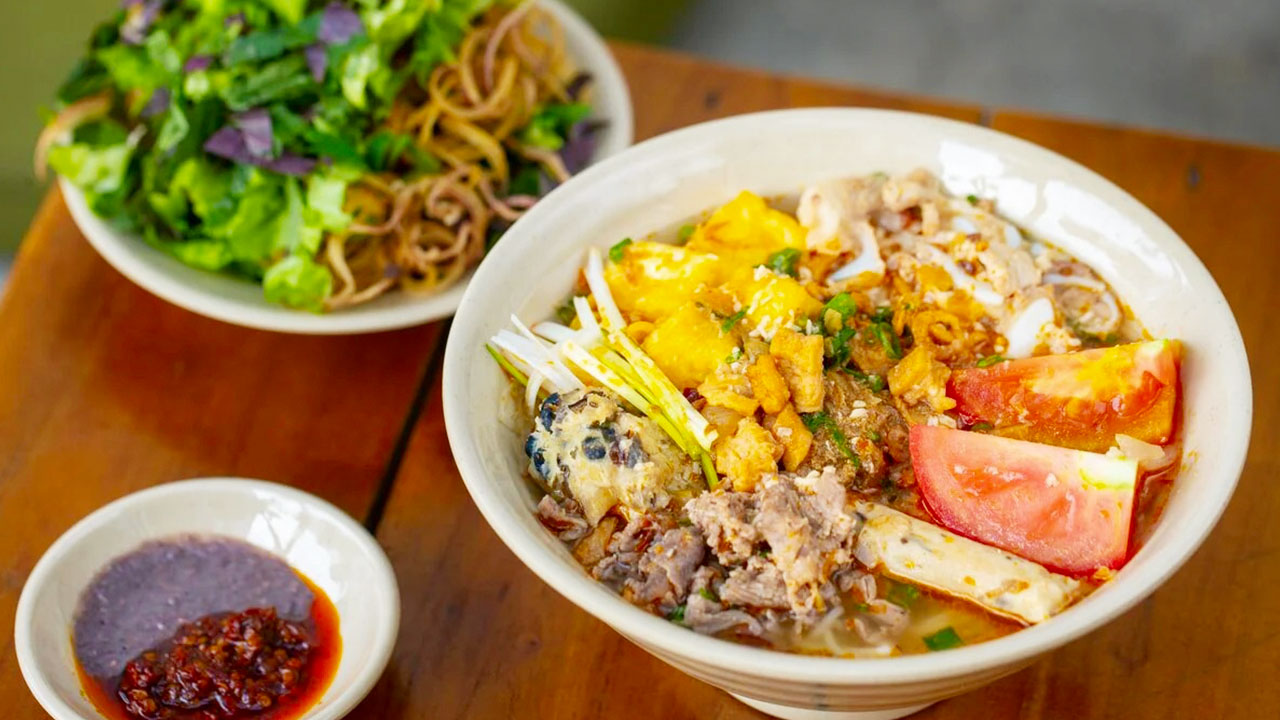
One pivotal dish that Hang Bo is famous for is bun rieu, a noodle soup distinguished by its rich and flavorful broth made from tomatoes, crab, and shrimp paste. This refreshing dish captures the essence of Northern Vietnamese cuisine and is often enhanced with various herbs and condiments. Street vendors serve it in a lively atmosphere, inviting food enthusiasts to savor this comforting bowl of goodness.
Another essential highlight is banh mi, the beloved Vietnamese sandwich that has gained global recognition. Hang Bo features several stalls offering various permutations of this delicious offering, from succulent meats to fresh vegetables, all nestled within a perfectly toasted baguette. Each vendor brings their unique twist, ensuring an array of choices for diners eager to discover their favorite flavor combinations.
Nem chua ran (deep-fried fermented pork rolls) also represent a local gastronomic delight, offering diners a unique taste experience that showcases the intricate balance of flavors common in Vietnamese cuisine. Often enjoyed as a savory snack or appetizer, these crispy rolls are typically served with fresh herbs and dipping sauce, adding to the delicious culinary complexity.
Of course, one cannot overlook the pho. Often deemed Vietnam’s national dish, Hang Bo Street boasts various eateries serving authentic pho bo (beef noodle soup). The rich, aromatic broth is complemented by flat rice noodles, fresh herbs, lime, and chilies, creating an unforgettable dining experience. The popularity of these pho stalls is evident from the lines of eager customers, indicative of the quality and authenticity of the meals provided.
Street food vendors line along Hang Bo Street, offering not only these highlighted dishes but also a plethora of additional options that immerse visitors in the culinary culture of the area. Each vendor contributes to the vibrancy of the street, allowing for rich interactions through the shared experience of dining and conversation. This dynamic food scene creates an avenue for locals and visitors to connect while exploring the rich flavors of Vietnamese cuisine.
In summary, Hang Bo Street stands as a gastronomic haven, showcasing a variety of local dishes that encapsulate the culinary spirit of Hanoi. From traditional favorites to contemporary interpretations, the culinary offerings on Hang Bo nourish both the body and soul, making it an essential stop for anyone eager to indulge in the delights of Vietnamese cuisine.
Popular Local Dishes
The culinary scene on Hang Bo Street is celebrated for its vibrant assortment of popular local dishes that reflect the rich tapestry of Vietnamese flavors and techniques. With each bite, visitors can experience the authentic essence of Hanoi’s street food culture, where traditional recipes and innovative interpretations meet to create unforgettable meals. Here lies a selection of must-try local dishes you can find along this lively street:
- Banh Mi: This iconic Vietnamese sandwich is synonymous with street food culture in Vietnam. On Hang Bo Street, you’ll encounter vendors specializing in this delicacy, offering a diverse range of fillings such as marinated pork, grilled chicken, and crispy fried tofu. Accompanied by fresh vegetables and savory sauces, a banh mi makes for a quick, delicious meal that captures the heart of Vietnamese cuisine.
- Pho Bo (Beef Noodle Soup): Known as the national dish of Vietnam, pho garners loyal fans worldwide, but the experience of enjoying it freshly made on Hang Bo is unmatched. Walk along the street, and you’ll come across eateries specializing in this aromatic beef broth served with rice noodles, fresh herbs, and lime. The strong flavors of the broth, combined with tender beef slices, create the perfect harmony that makes pho a favorite.
- Bun Cha: This traditional Hanoi dish includes grilled pork patties served alongside vermicelli noodles, fresh herbs, and a flavorful dipping sauce. The combination of smoky grilled flavors and the refreshing crunch of herbs highlights the balance found in Vietnamese cuisine. Bun cha stalls on Hang Bo Street often have long queues, signifying its popularity and the quality of the food.
- Cha Ca: A distinctive dish, cha ca features marinated fish cooked with turmeric and dill, served with rice noodles and fresh herbs. The unique preparation and the infusion of spices make it a beloved culinary experience along Hang Bo. Dedicated restaurants offer cha ca alongside flavorful dipping sauces that enhance the dining experience, providing diners an intimately authentic taste of Hanoi.
- Xoi: For breakfast enthusiasts, sticky rice dishes are popular on Hang Bo, featuring a variety of toppings such as shredded chicken or mung beans. Food stalls serve xoi warm, making it the perfect start to the day. The comfort of this hearty dish reflects Vietnam’s culinary ingenuity and daily rituals.
- Che: To round off a delectable meal, treat yourself to che, a sweet dessert soup made with beans, fruits, and coconut milk. Stalls selling this delightful dessert line the streets, offering refreshing options that beckon for indulging after a warming meal.
The diverse culinary offerings on Hang Bo Street not only satisfy cravings but also foster a sense of community and cultural connection through shared meals and experiences. As you navigate through the street’s vibrant offerings, each dish tells a gastronomic story that encapsulates the spirit of Hanoi’s renowned culinary scene.
Notable Restaurants and Food Stalls
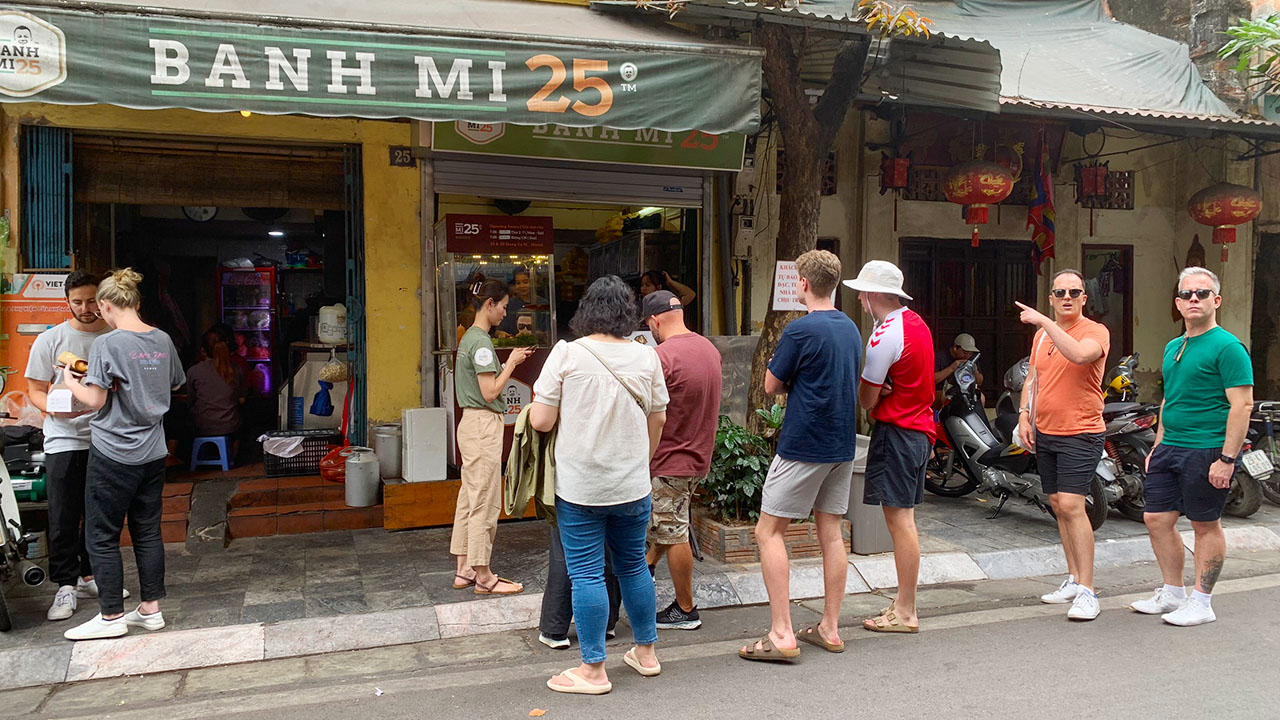
When exploring the culinary landscape of Hang Bo Street, a selection of notable restaurants and food stalls encapsulates the essence of Hanoi’s street food culture. These popular eateries are characterized by their vibrant atmosphere, authentic flavors, and warm hospitality, each providing visitors with delectable dining experiences. Here are some standout culinary locations worth visiting:
- Banh Mi 25: A beloved gem within Hang Bo, Banh Mi 25 is famous for its freshly made banh mi sandwiches. Offering an array of fillings, including pork, chicken, and vegetarian options, this stall captivates patrons with its delicious flavors and generous portions. The consistency of quality and flavor ensures a loyal following of both locals and tourists eager to indulge in this iconic Vietnamese dish.
- Bun Cha Dac Kim: This eatery is renowned for its bun cha, delivering flavorful grilled pork that is perfectly caramelized. Customers enjoy their meals alongside fresh herbs and vermicelli noodles, nestled in a rich dipping sauce. The popularity of Bun Cha Dac Kim is attested by the queues of eager diners consistently waiting to experience this Hanoi staple.
- Cha Ca Thang Long: Known for specializing in cha ca, this restaurant provides an immersive experience where diners can indulge in this traditional turmeric fish dish. The atmosphere celebrates the culinary heritage of Hanoi, and patrons often rave about the freshness and flavor of the dish, making it a don’t-miss experience for visitors.
- Phở Gia Truyền Bát Đàn: A local institution in the heart of Hang Bo, its fame originates from its rich and aromatic pho broth. Packed with flavor and depth, this eatery serves generous portions and has become a gathering spot for pho enthusiasts from near and far. Visitors will find the atmosphere bustling and lively testament to the restaurant’s reputation.
- Xoi Yen: For breakfast lovers, Xoi Yen brings a comforting array of sticky rice dishes that can be tailored to individual preferences. With options ranging from shredded chicken to mung beans, this stall offers a nourishing start to the day. The warmth of the freshly made rice and toppings makes it a popular choice among locals looking for a hearty, traditional breakfast.
- Che Ba Hanh: This dessert stall specializes in che, offering an assortment of sweet soup variations that captivate dessert lovers. Whether you prefer a fruity option with coconut milk or a classic bean mix, Che Ba Hanh promises to satisfy your sweet tooth and provide a refreshing way to end a meal at Hang Bo.
These notable restaurants and food stalls laying claim to Hang Bo Street create a lively culinary scene, inviting visitors to indulge in traditional flavors and connect with the rich culture of Hanoi. As they dine on delicacies that speak to the heart of Vietnamese cuisine, patrons become part of the ongoing story that Hang Bo has to tell.
Shopping Experience on Hang Bo Street
The shopping experience on Hang Bo Street embodies the rich heritage and cultural diversity of Hanoi, offering an eclectic mix of traditional crafts and contemporary goods. As visitors traverse this lively thoroughfare, they are greeted by a melting pot of sights, sounds, and scents that highlight the vibrant local market atmosphere. From handmade items to culinary delights, shopping on Hang Bo is an immersive experience that encapsulates the essence of the Old Quarter.
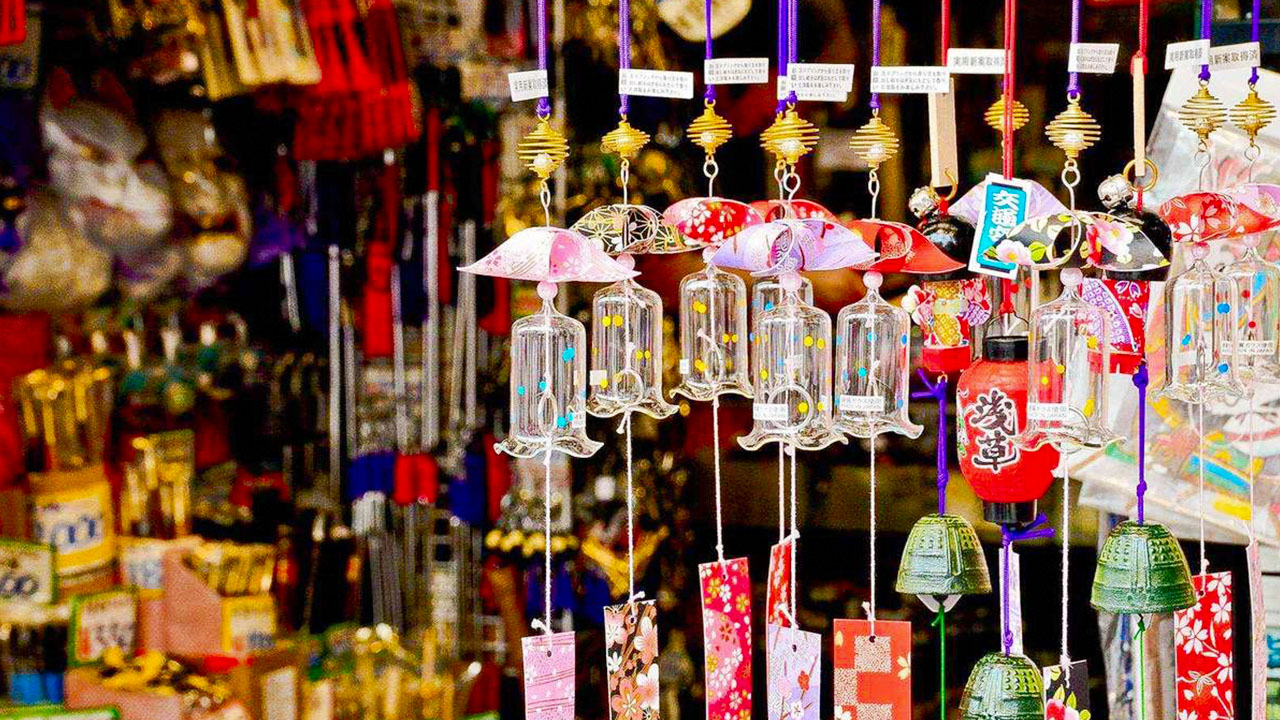
One essential aspect of shopping on Hang Bo is exploring local crafts. Shops along the street proudly showcase a range of handmade products that celebrate Vietnamese artistry, including bamboo baskets, ceramics, textiles, and intricate wooden carvings. Each piece tells a story of the craft’s origin and the skilled artisans who pour their hearts into creating them. Visitors seeking unique souvenirs or gifts can often find treasures that reflect the rich cultural heritage of the region.
The vibrancy of Hang Bo Street’s shopping scene extends beyond traditional crafts. Modern shops have begun to emerge, offering contemporary fashion and accessories that cater to both locals and tourists looking for stylish and affordable items. The graduate blend of tradition and modernity is particularly appealing, allowing visitors to explore the evolution of Vietnamese fashion while retaining a sense of local identity.
Food along Hang Bo Street adds yet another layer to the shopping experience. Early mornings are filled with the enticing aromas of street food, where vendors sell fresh pastries, pho, and brewed Vietnamese coffee that lures shoppers into an impromptu breakfast break. This delightful fusion of shopping and dining creates a lively atmosphere, inviting visitors to dive into the local culinary landscape while browsing for goods.
Moreover, the bustling environment of Hang Bo is enhanced by the friendly interactions and stories exchanged between vendors and customers. This communal aspect fosters connections and gives visitors a chance to engage with the local culture. Patrons are not merely observers; they are part of an ongoing cultural exchange as they navigate through the stores and stalls.
Finally, Hang Bo Street’s locale makes it a convenient starting point for further exploration. Nearby attractions, such as Hoan Kiem Lake and Dong Xuan Market, complement the shopping experience, allowing visitors to engage with a variety of cultural and commercial offerings all within walking distance.
In summation, the shopping experience on Hang Bo Street is a vibrant celebration of Vietnamese culture, where tradition meets contemporary charm. Merging crafts, culinary delights, and the warmth of local interactions, Hang Bo creates an inviting environment for both locals and visitors to forge connections with the city’s rich heritage.
Types of Goods Available
As we meander down Hang Bo Street, a plethora of goods on offer paints a vivid picture of Hanoi’s cultural identity. The street is notable for its diversity, featuring traditional crafts, culinary delights, modern retail, and unique souvenirs. Visitors to Hang Bo can enjoy an exceptional shopping experience that showcases the rich heritage of Vietnam while also providing contemporary options.
- Traditional Crafts: Revered for its historical roots, Hang Bo is well-known for selling an array of handmade bamboo products, particularly baskets. The craftsmanship demonstrated by local artisans reveals the time-honored traditions that have persisted for generations. Visitors can also find intricate ceramics, silk items, and other artisan goods, all of which exemplify the skills and cultural significance of Vietnamese craftsmanship.
- Jewelery: The proximity of Hang Bo to Hang Bac Street, famous for its silver shops, means that jewelry enthusiasts can delight in browsing through a selection of beautifully crafted silver items. Rings, bracelets, and necklaces are made by skilled artisans, offering insight into traditional Vietnamese designs, often intertwined with modern styles, making them ideal souvenirs or gifts.
- Culinary Goods: Visitors can expect to be greeted by a fantastic assortment of street food and local delicacies. Stalls selling banh mi, pho, and other traditional meals present an opportunity to taste authentic Vietnamese flavors while shopping. While exploring the street, sampling local flavors adds to the overall experience, allowing visitors to create lasting memories of their culinary journey.
- Fashion and Accessories: Hang Bo has evolved to include trendy clothing and accessories that reflect modern Vietnamese fashion while blending cultural influences. Shoppers can find fashionable attire made from quality materials, showcasing local craftsmanship while catering to contemporary preferences. Unique accessories such as handmade bags and scarves add to the charm of this vibrant shopping scene.
- Household Items: A selection of household goods is available within the shops on Hang Bo, featuring locally produced kitchenware and home decor items. These goods range from traditional utensils to modern decorative pieces, covering various styles and preferences for all types of shoppers looking to introduce a piece of Vietnam into their homes.
- Gifts and Souvenirs: Hang Bo Street hosts numerous souvenir shops and vendors that cater to the needs of tourists seeking unique mementos from their travels. Postcards, art prints, handmade bags, and cultural artifacts can be found, allowing visitors to celebrate their time in Vietnam while supporting local artisans.
Overall, the types of goods available along Hang Bo Street present a vivid reflection of Vietnamese culture, combining traditional craftsmanship with modern influences. A visit to this vibrant shopping destination not only allows for the exploration of quality products but also serves as a delightful immersion into the local way of life.
Best Shops and Markets
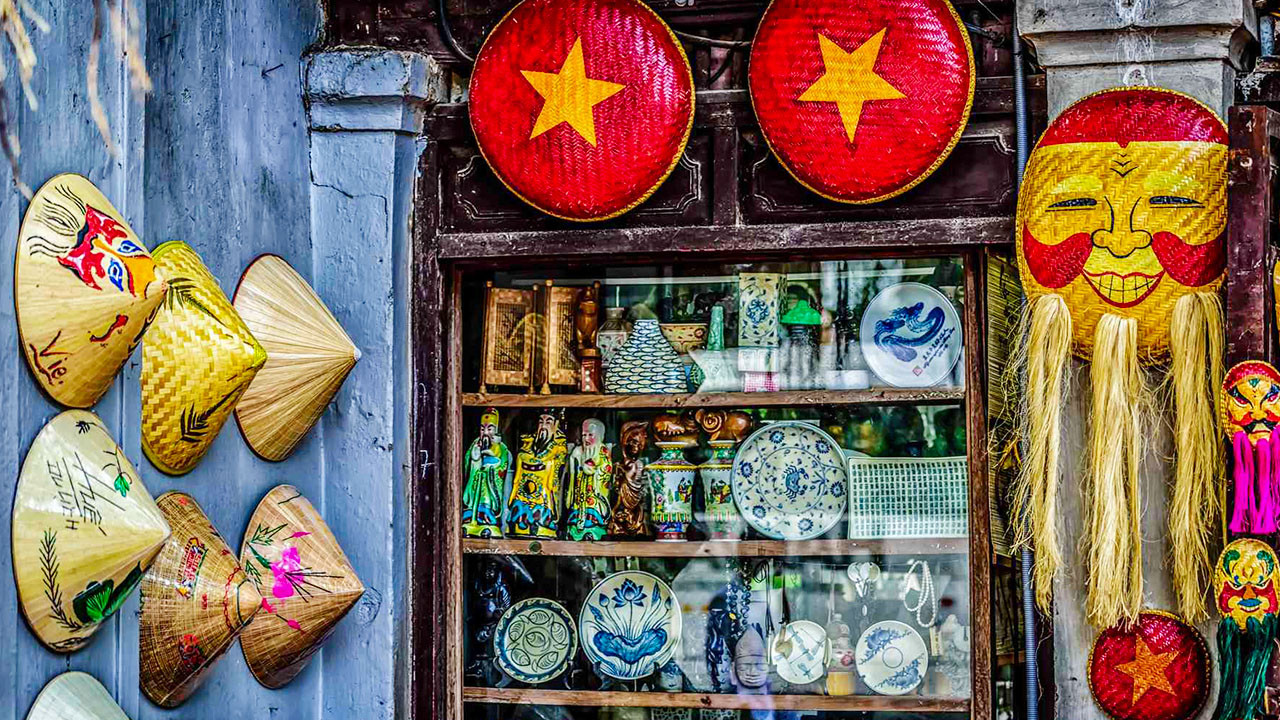
The array of shops and markets lining Hang Bo Street presents a diverse shopping experience that encompasses traditional craftsmanship, culinary delights, and contemporary retail. Each location holds unique offerings that cater to both locals and tourists, revealing the rich cultural fabric of Hanoi. Here are some of the best shops and markets to explore when visiting Hang Bo Street:
- Traditional Craft Shops: Scattered along Ham Bo, shops specializing in bamboo goods showcase exceptional craftsmanship. Visitors can find beautifully designed baskets, decorative items, and other handwoven products that offer insight into the artisanal heritage of Vietnam. These traditional craft shops provide not only a source of beautiful and functional items but also serve as a reminder of the cultural history embedded in each creation.
- Haberdashery Stores: Known for their bustling haberdashery items, shops on Hang Bo sell a wide range of sewing supplies, including threads, zippers, and buttons. These stores cater to both locals and visitors, providing the chance to explore unique fabrics and materials for personal projects. This market feel evokes a sense of community, as crafters and hobbyists converge over a shared passion for crafting.
- Food Markets: The lively atmosphere of Hang Bo is accentuated by the presence of food markets where visitors can indulge in street food favorites. Banh xeo restaurants, specializing in Vietnamese sizzling pancakes, invite diners to experience local cuisine within a bustling market setting. Food stalls and vendors serve fresh, mouth-watering dishes that embody the culinary richness of the region.
- Jewelry Shops: Located near Hang Bac Street, shops specializing in silver jewelry invite enthusiasts to browse a wide selection of handmade pieces. Visitors can discover unique designs that reflect Vietnamese culture while obtaining wonderful souvenirs to memorialize their visit. The silver shop offerings range from modern styles to traditional craftsmanship, showcasing the captivating artistry of local jewelers.
- Local Market Experience: As visitors stroll down Hang Bo Street, they’ll encounter an inviting market atmosphere filled with vibrant colors, delicious aromas, and friendly interactions. Street vendors often engage passersby, offering tastes of local delicacies, fresh fruits, and flowers, enhancing the shopping experience with examples of daily life and cultural traditions. This lively environment serves as a perfect blend of local commerce and cultural engagement.
- Cultural Artifacts: During special festivals like Tet, Hang Bo Street showcases cultural artifacts and vibrant displays of traditional art forms. Colorful paintings, handmade decorations, and various cultural memorabilia are available, creating an engaging atmosphere that draws in tourists and residents alike. These celebrations provide visitors with an opportunity to participate in the festivities while shopping for meaningful souvenirs.
In summary, the best shops and markets along Hang Bo Street provide visitors with a delightful shopping experience that embodies the rich cultural heritage of Hanoi. From traditional craft shops and haberdasheries to vibrant food markets and jewelry stores, the eclectic mix available evokes the spirit of community and invites an exploration of local culture.
Conclusion
Hang Bo Street is not just a destination; it is a living testament to the rich cultural narrative and historical tapestry of Hanoi. From its vibrant food scene and traditional crafts to the historic landmarks and communal atmosphere, every element of the street contributes to the unique identity that defines this part of the Old Quarter. It encapsulates the ongoing evolution of a community deeply rooted in its history while simultaneously embracing contemporary life.
As we traverse through the narrow lanes of Hang Bo, we experience more than just shopping and dining; we are invited to immerse ourselves in the daily lives of its residents, each sharing in the collective heritage that shapes their identity. The blend of colonial and traditional architectural styles reflects the historical negotiation between past and present, while the lively interactions between vendors and shoppers highlight the community spirit that continues to thrive.
Festivals and cultural events add layers of vibrancy, allowing visitors to witness the celebrations that punctuate life on Hang Bo. This historic street transforms into a playground of colors, scents, and stories during notable occasions, emphasizing the importance of traditions and the joy of shared experiences. As the sun sets and the street lights twinkle, Hang Bo comes alive with the warmth of communal dining, laughter, and storytelling, creating memories that linger long after the visit.
In essence, Hang Bo Street represents a microcosm of Vietnamese culture dynamic, rich in history, and deeply interconnected with the lives of the people who call it home. It invites exploration and appreciation of the past while inspiring curiosity for the future. Whether you’re savoring luscious street food, purchasing handcrafted souvenirs, or simply enjoying the atmosphere, a visit to Hang Bo is an invitation to delve into the heart of Hanoi’s enduring spirit and its historical resonance.
As you venture through Hang Bo, remember that you are not merely a visitor you are a participant in a living history, contributing to the ongoing narrative that makes this street an exceptional part of Vietnam’s cultural heritage. Embrace the flavors, the craftsmanship, and the community spirit, and let Hang Bo capture a piece of your heart amidst its enchanting charm.

